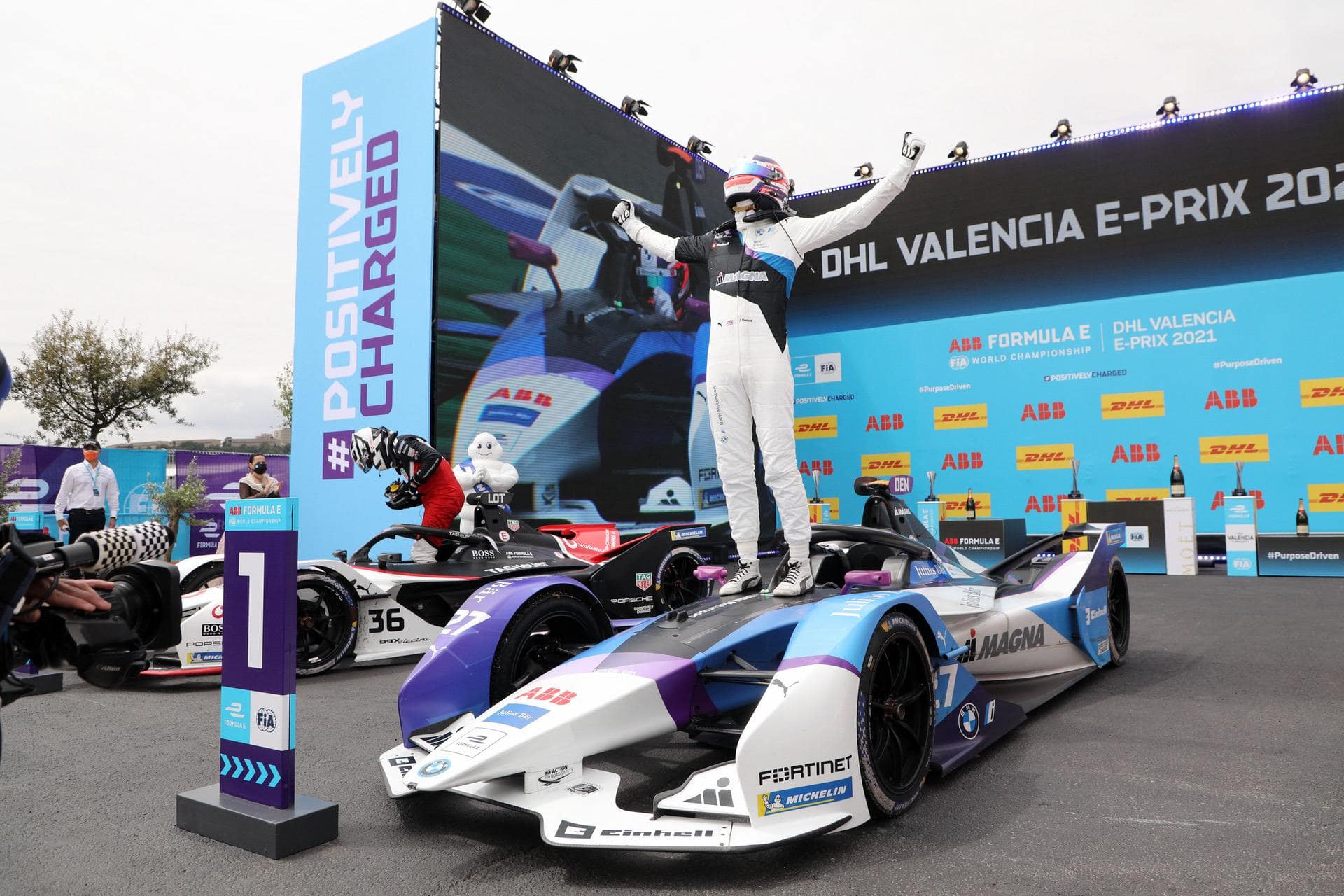Last week’s Valencia ePrix brought us a bit of everything — surprises, anguish, and exhilarating joy. As it was another double header, the BMW i Andretti team struggled through a disappointing wet first race that had promised more than it delivered, but the disappointment turned to triumph in the second race with the team’s first victory of the season courtesy of a brilliantly controlled drive from the rookie Jake Dennis. Today’s recap will be on the first of the two races.
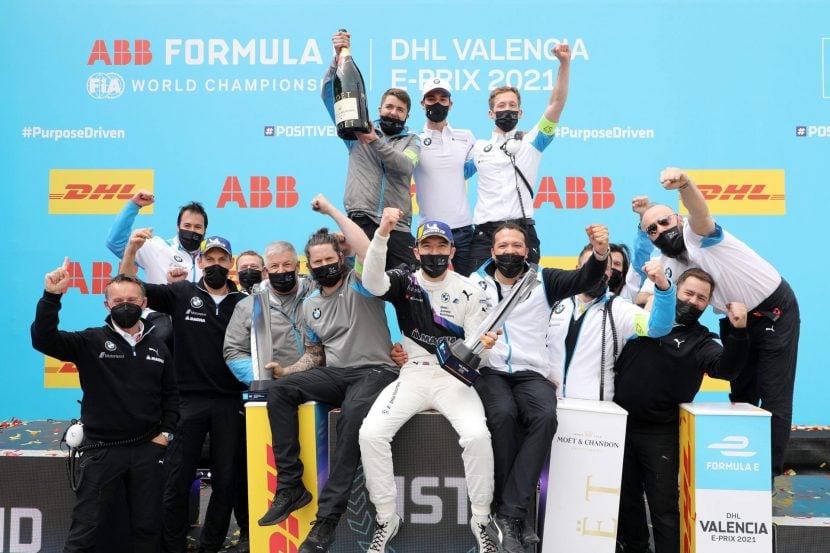
Despite Valencia’s Circuit Ricardo Tormo serving as the preseason testing venue for Formula E for several years, it had never actually hosted an ePrix. That all changed last week with the first ever Formula E race to take place in Spain: the Valencia ePrix. The Valencia ePrix represented a significant departure from the general philosophy of race tracks typically used in Formula E. In contrast to the usual tight street circuit with walls bordering the track at every straight and turn, the Circuit Ricardo Tormo is a permanent racing facility with a wide track complete with run-off areas and gravel traps.
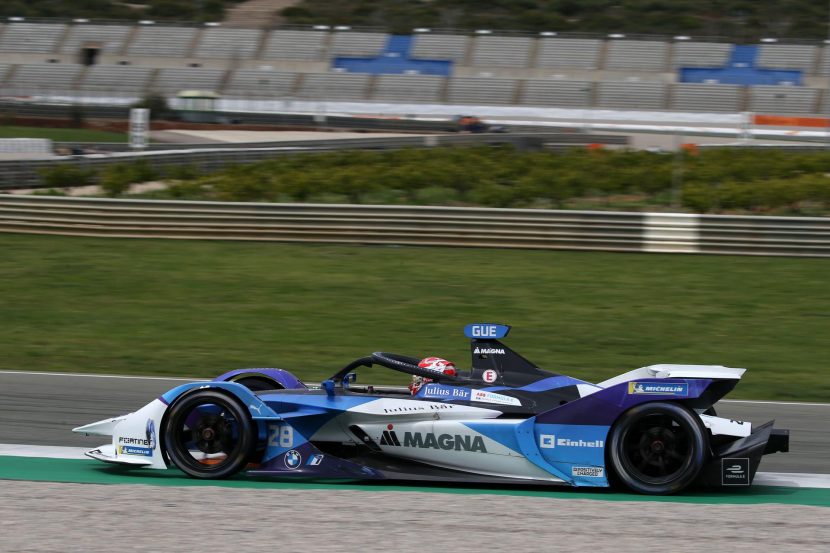
Interestingly, the BMW i Andretti team has traditionally performed very well at the preseason tests in Valencia — in fact, some experts even suspect that the team engineers a car that performs ‘too well’ in Valencia at the expense of its performance on other tracks. Free Practice did indeed go well for BMW Andretti and their drivers Max Guenther and Jake Dennis.
But as it was two weeks prior in Rome, the weather threw an unexpected variable into the mix. In a wet Qualifying session, Dennis managed to qualify 13th while Max Guenther made it into the Super Pole session, qualifying an excellent third. This became second when Stoffel Vandoorne was disqualified from the session due to a minor technical infraction by his team.
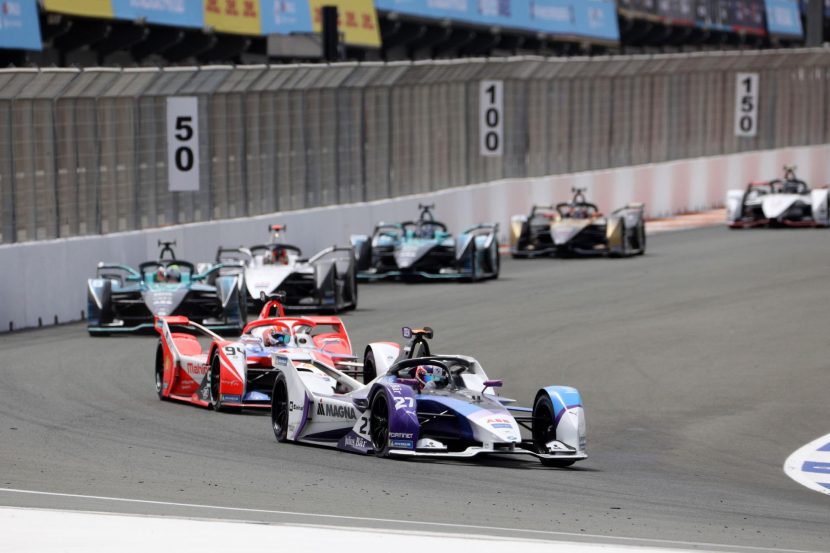
With the track at just about its wettest as the race start approached, the race director once again opted for a start behind the safety car. Guenther, starting in second behind Antonio Felix da Costa and just ahead of Alex Lynn, may have appreciated this decision as it was in effect a free chance of keeping his second place.
However, the start didn’t go too well for Guenther. With 43 minutes (+1 lap) remaining, the safety car returned to the pits, leaving the cars free to race on a soaking wet track. Guenther immediately was lagging behind da Costa, with Lynn breathing hotly down his neck. Dennis, in the meantime, was looking frisky in the midfield and gave two-time champion Jean-Eric Vergne all he could handle on the first lap of racing.
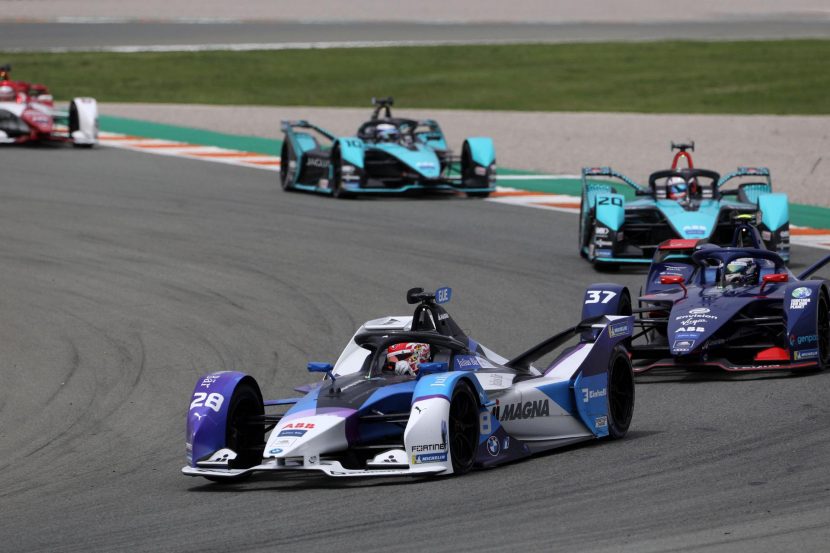
A wet race tends to beget incidents, and incidents can often bring out the safety car. As such, the race was punctuated by numerous safety car periods, the first of which began with 41 minutes (+1 lap) remaining. Andre Lotterer in the Porsche was battling with Norman Nato in the Venturi. Lotterer attempted a dive down the inside of Turn 9, but couldn’t control his braking and tipped the Nissan of Sebastien Buemi, running ahead of the pair of them, into a spin. Buemi was beached in the gravel, and several drivers, including Dennis, had to take evasive action to get around him.
Unfortunately for Dennis, this dropped him down to 15th even though he had been about to overtake Vergne for 12th before the pair of them arrived at the scene of the crash.
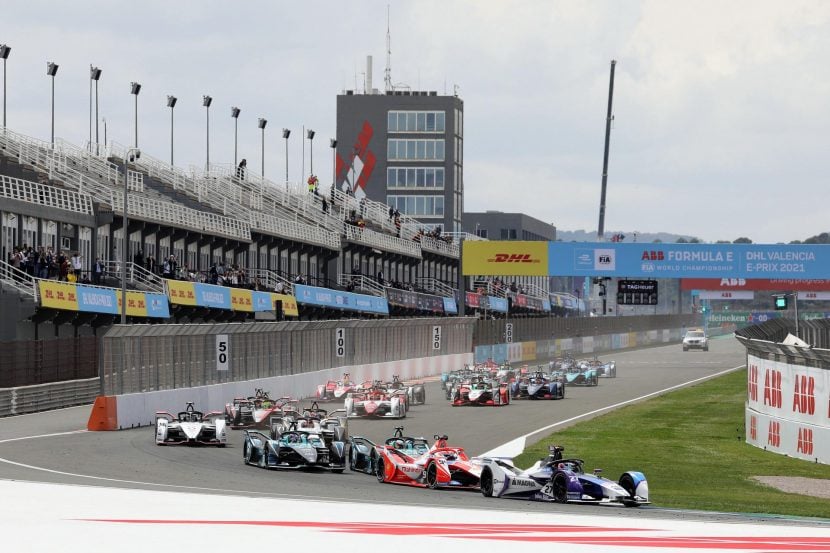
The safety car period ended with about 35 minutes (+1 lap) to go. Da Costa went early, and once again left Guenther in his dust. Guenther, though, at least was doing better on energy than his pursuer Lynn was. But as the race progressed, da Costa continued to pull away while a huge queue of cars formed behind Guenther. Something was clearly not right with the BMW iFE.21, and Guenther was soon passed by Nyck de Vries and then Lynn.
The team then pulled an astute tactical move, having Guenther take Attack Mode at this time without losing any positions. But shortly after that, other cars took Attack Mode as well and Guenther was soon passed by Oliver Rowland and then Alexander Sims. Dennis, in the meantime, was having a spunky race, recovering from his earlier misfortunes by driving past Robin Frijns for 13th, then finally getting past Vergne for 12th. He then took Attack Mode with 25 minutes (+1 lap) remaining.
Unfortunately, on the very next lap, the day would go from bad to worse for Guenther as he lost grip and slid into the gravel trap at Turn 2, where he was beached. That would bring out the safety car again. A few minutes later, the safety car had just gone back in before it was summoned once again, this time for more chaos at the Turn 8 and 9 complex. Mitch Evans hit Sergio Sette Camara’s Dragon entering Turn 9, while in the meantime, Vandoorne had run wide in Turn 8 and rejoined rashly.
A few minutes later, the safety car came out again following another miscalculated escapade from Lotterer — this time, he hit Edoardo Mortara going down the inside, sending both of them into the Turn 1 gravel trap. While Mortara was able to keep going, Lotterer was beached. The safety car went back in with just 1 minute (+1 lap) to go, setting up the stage for complete mayhem.
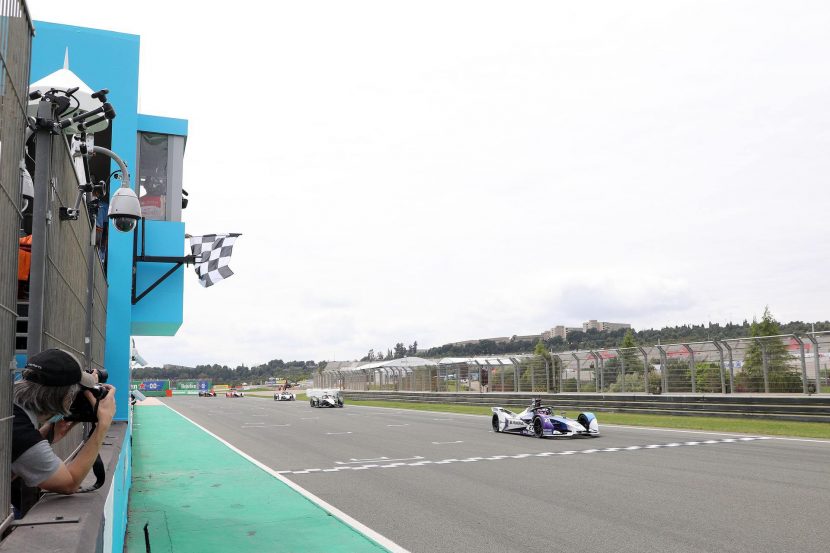
In Formula E, much of the focus is on how technological advancements made in the racing series can be applicable to road cars and EV’s. Thus, demonstrating the ability to maximize the return from a battery is very much in line with the aims of Formula E. This is why conserving energy is such a big part of the races, despite some fans feeling that Formula E should be promoting flat-out racing more. With these ideas in mind, a new rule was implemented starting last season where laps run under the safety car or full course yellow conditions would result in a reduction of the total amount of usable energy for each car.
In this race’s case, the energy recalculations resulting from numerous safety car periods across the first 44 minutes of the race threw the final minute or two of the race into absolute disarray. Somehow, the amount of usable energy subtracted was such that with 1 minute (+1 lap) to go, almost all cars only had enough energy for one more lap. Da Costa was in the lead as the safety car prepared to head back into the pitlane, but there was no way for him to go slowly enough to cross the finish line late enough so that the clock would run out. He would start the lap with just under 20 seconds to spare, meaning that there would be one more lap in the race after the one he just started on.
But most cars at this point were running on between 1% or 4% of usable energy remaining, the amount of energy usually spent over one lap. The only three cars that still had sufficient energy were:
— Nyck de Vries, running in second place. Incidentally, his team had been on his radio several times telling him that he was “underconsuming” energy and advising him to hurry and use the excess energy before it went to waste.
— Nico Muller, running in 15th place. Muller had had to take a drive through penalty at the start of the race, which was why he was running right at the back. But it was also why he had saved up a lot of energy compared to other drivers — trundling down the pitlane saves quite a lot of energy, it turns out.
— Stoffel Vandoorne, running in 14th place. Having come from dead last on the grid, Vandoorne had conserved enough energy. He would soon be overtaken by Muller, though.
These three drivers would eventually take the three spots on the podium. Further down though, everyone was struggling, with drivers slowing down to a crawl in an attempt to make 1% of battery power last a full lap. Some cars did not make it — Norman Nato ran out of energy on the penultimate lap, while both NIO’s ran out of energy on the final lap. In the end, Dennis was one of multiple cars that were barely able to finish the race after an extremely slow lap. Following disqualifications to drivers who ran out of energy, he ended up in 8th place, scoring his first points of the season!
It will no doubt have been a relief to Dennis, as he was one of only two drivers to enter Round 5 with 0 points. Having broken that duck, would he be able to carry the good momentum forward to the next race in Valencia?


